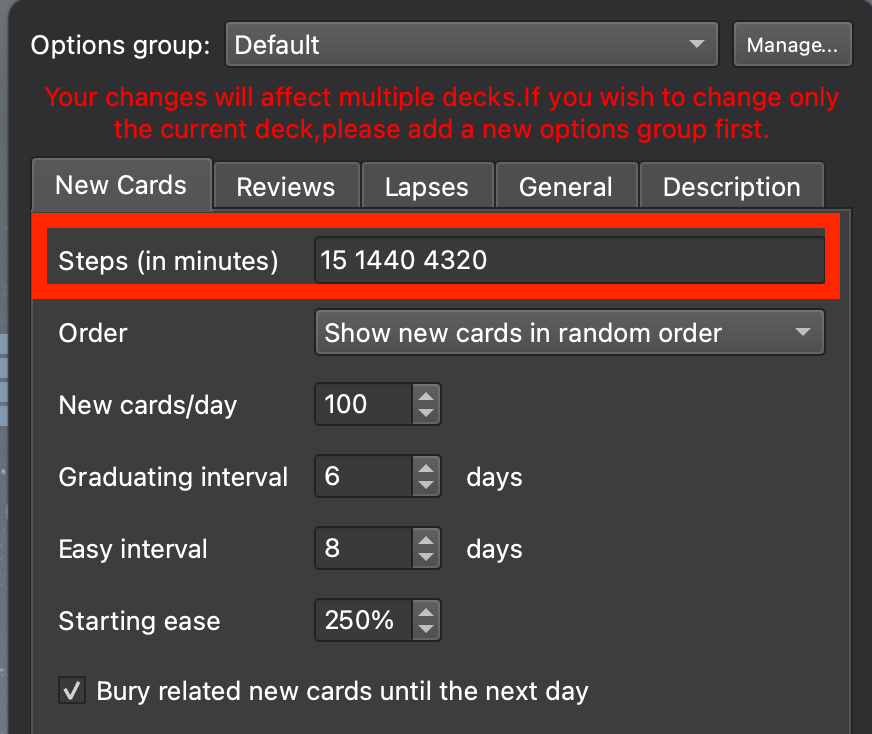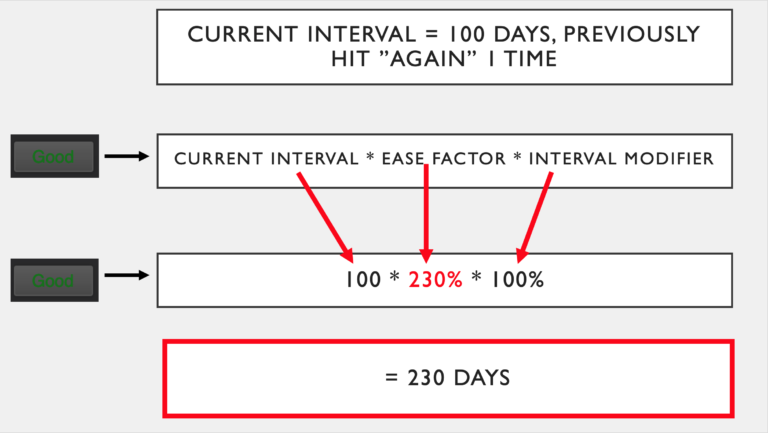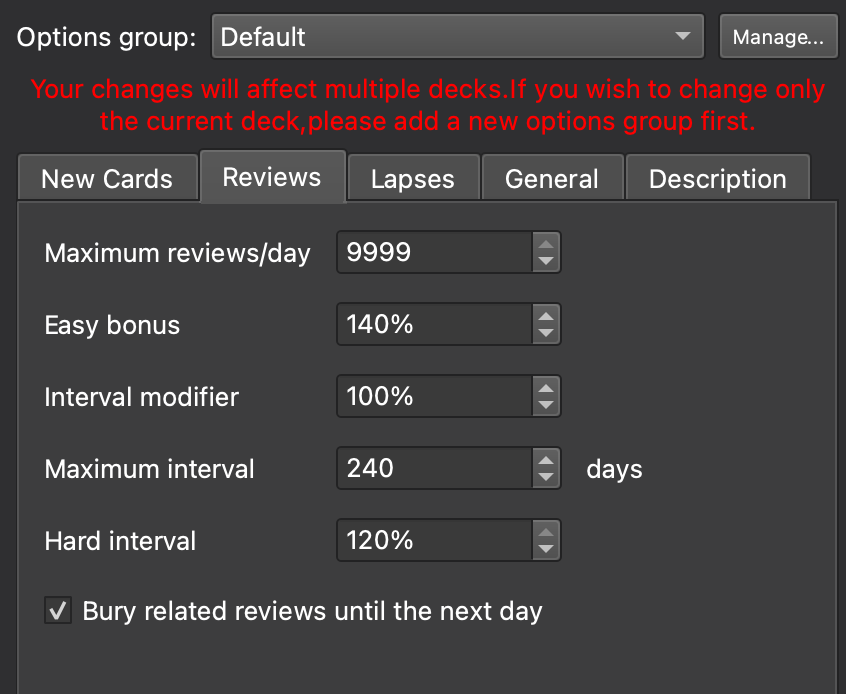

Set “Maximum interval” to a realistic number, like 180 or 365. I don’t want my poorly-encoded cards disappearing, so I recommend not changing the Leech Action to “Suspend Card.” (This usually happens when your cards aren’t encoded or future-proof) When the card has graduated, it will use the “Lapses” and “Advanced” settings:įor the re-learning steps, 10 minutes is already fine for avoiding “mindless recall” when reviewing lapsed cards/ When a card has graduated, the buttons you press after answering that card will then determine how often that card will show up in the future, rather than the learning steps. (Think of the steps as a “grade” in grade school - you graduate once you’re done with it)

When you see that option, it means that that specific card will graduate after you get it correct. You’ll know it when the value you put in the Graduating Interval appears in your “Good” answer button.

Obviously, this doesn’t apply to graduated cards - which is what a new card turns into once you’ve surpassed the learning steps. So, just to be on the safe side, go through all of your learning steps for your new cards by pressing “Good.” Stability Bias) and that’s the trap we will fall into if we don’t “filter the bad cards out.” Now, just because a card is easy to remember now doesn’t mean it’s going to be remembered in the future - we have a bias to believe otherwise (cf. I don’t recommend you pressing “Easy” right away because that tends to skip the “learning steps.” 1 “How do I choose answer buttons for New Cards?” This is also why I recommend letting relevance determine deck creation. I found from experience that this kind of interleaved practice not only leads to stronger retention, but also helps you dissolve boundaries between subjects. What this does is make the questions show up in a “shuffled” way. The advantage in setting this number is that when the Anki algorithm kicks in, future intervals will be based on this number. My rationale here is to have a graduating interval that is a bit longer than 2x the last one - so we’re essentially just continuing the spaced intervals we set in the learning steps. The next two numbers determine the intervals when you press “Good”.Īnd like the tab says, all of these only apply to New Cards. So the first number is actually the number of minutes the card will show up again if you pressed “Again”. This means that pressing Again shows the card in 10 minutes and pressing Good would show the card after 1 day, then after you press “Good” on that, you’ll see it again after 3 days. The Learning steps setting is set to 10m 1d 3d. Otherwise, you only get fragmented, useless retention that cannot be used as an activated semantic context.įor the New Cards, I recommend these settings: But take note that this can only be true if you have encoded what you’ve learned before making flashcards. Retention of past knowledge makes future learning easier. So you need to retrieve them in order to make them stronger - at least, before they fade into oblivion when more complex concepts are still far ahead. New information lacks depth, and should therefore be studied immediately. With that said, I will also share with you the underlying concepts (and provided supplementary materials) so you can tweak them on your own. Once you use these settings I’m going to give you, you’ll be able to avoid these two problems right away so you’ll have a smooth review experience every single time. Going back to the first problem, sometimes Anki would have you review an old card as if it were a new card the moment you lapse on that card. Some settings just don’t make sense at all.Newer cards don’t get reviewed as frequently, and older cards start back to zero when you’ve lapsed even partially. The default intervals (both for new and older cards) give a really poor review experience.That’s because in my experience, there are two problems to the default settings: Why? Because I want you to be able to think for yourself so you can adapt the settings to your own situation. That’s because I don’t only want you to have “ready-made” templates, but also a complete understanding of how the advice I’m giving you works. In this lesson, you’re going to learn my recommended Anki settings and how settings work in a more practical manner. When you create good flashcards + use these settings I’m going to show you, the answer is approximately 5 successful repetitions. How many repetitions do you think you need to be able to remember an idea for 3 months? I hope you like it! Let me know if you have any questions or feedback - I'd like to hear what you think! 🙂
OPTIMIZED ANKI SETTINGS FREE
Hi, this is Lesson 4 of 4 in the Anki Fundamentals free course.


 0 kommentar(er)
0 kommentar(er)
